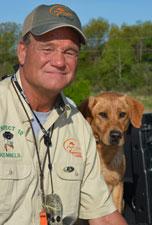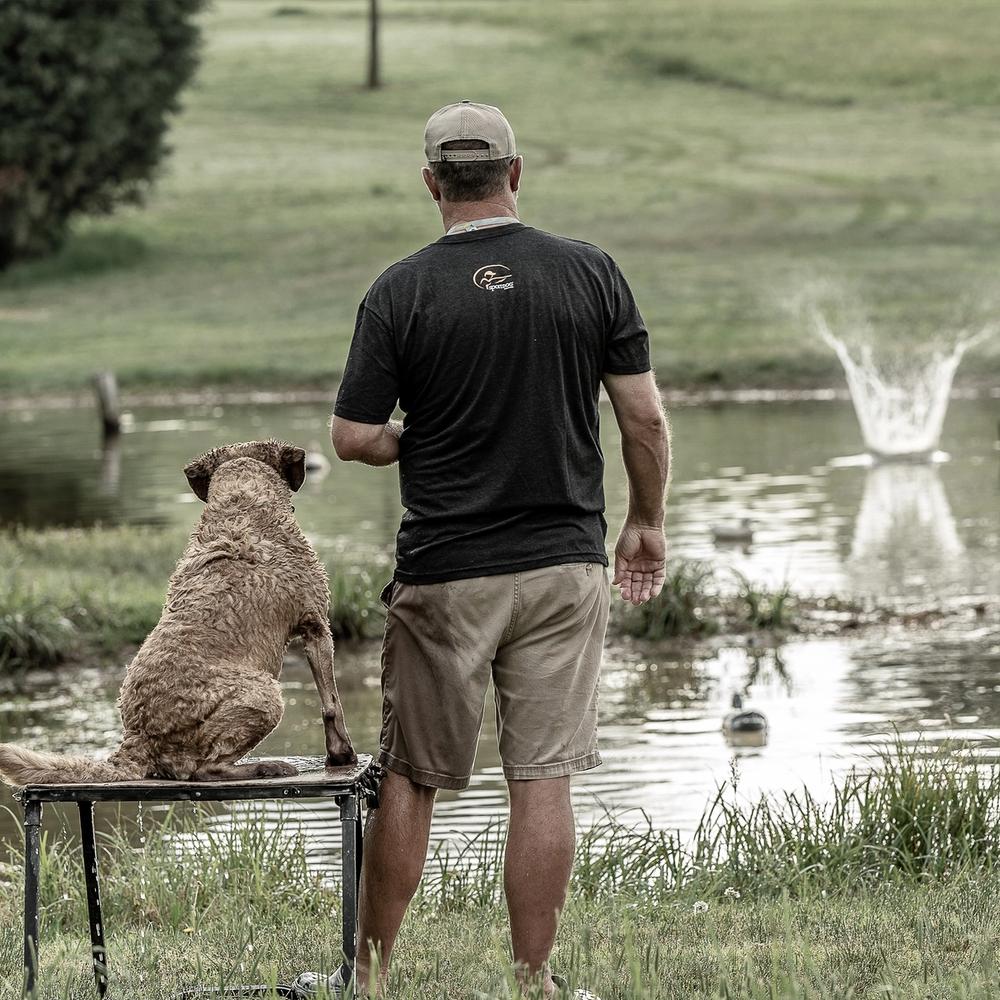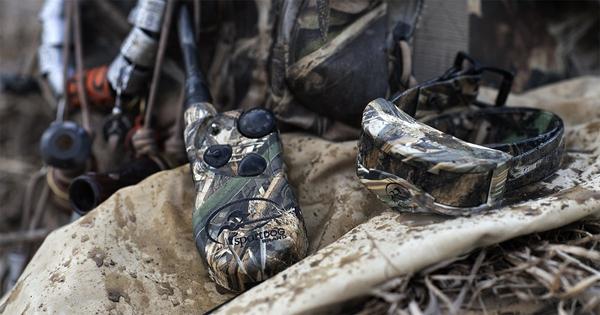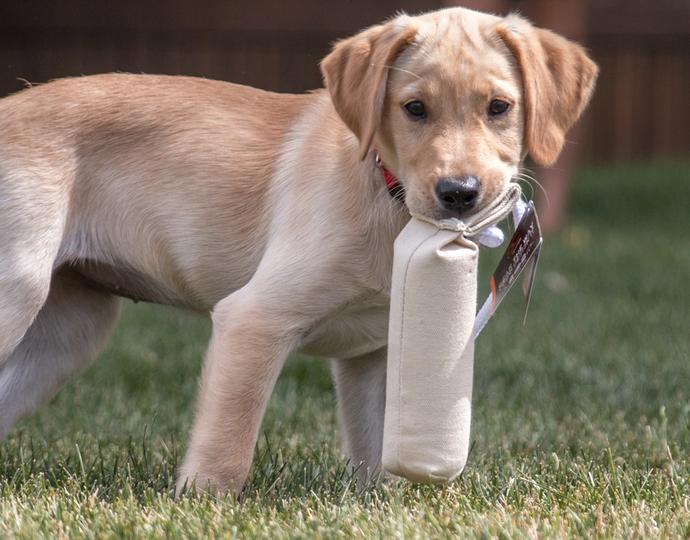
Introducing Your Retriever to Upland Hunting
Posted by Rick GrantOne of the most common questions I’m asked when I’m doing training demonstrations for SportDOG is this one: “How do I keep my retriever hunting in range?” Without a doubt, keeping your dog from getting too far out in front of you when he gets on the scent of a running pheasant or grouse can be a huge challenge.
I have some very basic training drills I start with when my dogs are young, and then I have more advanced tactics to address problems if they come up when the dog gets older. Let me start with the basics.
I start by taking a pup for walks in light cover as soon as he’s able. 8 or 10 weeks old is not too young to get started on this. I always walk back and forth as we move down a field because that’s how you’ll want him to work when it’s time to go hunting. You want to instill that desire to search and cover lots of ground.
As my dog gets a little older and bolder, we do these walks with a 50-foot check cord. The second he starts to stretch the limits of that rope, I give a little tug on it and tell him, “Too far.” The dog quickly learns he can go side to side all he wants, but running straight out and constantly testing the limits of the check cord is not the way to go.
As your dog matures and you’ve taken him through the introduction to the e-collar, now you can reinforce that tug on the rope with a nick, or momentary stimulation, on the collar. So the correction goes like this: “Too far,” followed immediately by a tug on the cord with a simultaneous nick. If you’ve taken the proper steps to introduce your dog to the e-collar you should know what level your dog responds to. There will be times you’ll have to raise the level a bit if he’s not complying. Often a dog that is excited will require a heavier correction than he did during obedience training.
Now the purpose of the check cord and e-collar correction is not to make him come running all the way back to you. You don’t want to turn him off from the excitement of getting out and searching for birds. You’re just reinforcing his limits and showing him over and over again what’s acceptable.
Since the whole point of these drills is to get your dog out searching for birds, you’ll want very early in this process to introduce training birds into the mix. I want my dog to be successful, gain confidence, and have fun all at the same time. So now I plant a mixture of dead and live pigeons in the field. For example, I’ll plant a dead one on the left, a dead one on the right, and then a live one closer to the center. Next time I’ll mix it up and maybe put a live one left and right and a dead one in the center.
When your dog flushes a pigeon and it flies off, your dog will want to chase it. Don’t let him go running off over the horizon. Keep the check cord on him for these drills. Tell him “No bird” and bring him back to you, and then praise him for doing a good job. Then encourage him to get out and hunt again and look for the next bird.
To really fire him up, I’ll get a couple helpers and have them walk parallel to us on each edge of the field. As we start to get near where a dead or live bird is planted, a helper will yell, “Hey, hey!” and wave his cap to get the dog moving in that direction. I might even have the helper wave a fluttering, wing-clipped pigeon and then have him hide the bird behind his back or put it back in his game pouch as the dog heads in that direction. The idea is not for the helper to be the source of the bird, it’s simply to attract the dog’s attention. Every time this happens, the dog stumbles across a bird, and this again reinforces the pattern of searching back and forth instead of running straight away.
These drills are fairly simple, and it’s pretty easy to keep things under control since you’re the one planting the birds. But things can get a lot more complicated in actual hunting situations when you encounter running pheasants, multiple flushes, lots of gunfire, etc. In my next article I’ll discuss ways to prepare for those kinds of challenges and how to troubleshoot common problems.
Please check all of your local and state regulations before training.

Rick Grant
Fort Atkinson, WI
With his wife Terri, Rick co-owns and operates Perfect 10 Kennel. Their business offers boarding, grooming, and retriever training. They also breed Labrador retrievers. Rick has 30 years of experience in retriever training, participating in everything from field trials to hunt tests to upland hunting competitions.
Related Articles

Make Your Upland Retriever Crazy for Feathers
by Tom Dokken
There’s nothing better than a hard-charging flushing dog that is absolutely crazy for birds. But how do you make sure your young retriever will turn out like that? Here are the steps I use. You can introduce your retriever to feathers when he is very young, say up to 12 weeks....

Getting Your Retriever in the Thick of Things
by Rick Grant
If you were going to go pheasant hunting on a farm where you’d never been before, where would you start your search? You would probably head for the thickest cover because you know that’s where birds feel safest and therefore tend to hang out the most, right? Well, when you...

Training Your Retriever for Double Duty
by The SportDOG Staff
If you own a waterfowl dog, chances are that sooner or later you’re going to ask it to perform upland duty. It might be a pheasant hunt as a sideline to your Dakota duck hunt, or maybe an afternoon of quail hunting after a morning goose hunt. Most retrievers handle...

Upland Hunting in High Cover - Video
by The SportDOG Staff
In this SportDOG Training Tip (originally aired on Pheasants Forever Television) SportDOG Senior Pro Staffer Tom Dokken gives tips on using remote beeper to track and train your hunting dog.

Building a Steady Retriever
by Tom Dokken
A retriever that remains calm in a duck blind and concentrates on watching birds fall is a joy to hunt with. In a perfect world, that’s how all retrievers would behave. While a steady retriever is something that most hunters want, the reality is that very few retrievers are truly...

How To Choose An E-Collar For Retriever Training
by The SportDOG Staff
Opinions on the right way to choose and use a remote electronic collar for retriever training are as varied as the countless training methods used to create a top-notch waterfowl dog. I’ve been fortunate that my time and experience in retriever training have allowed me to experiment with a lot...

Training Your Retriever to Dummies
by The SportDOG Staff
Training a retriever can be one of the most rewarding experiences any hunter can have. There are no secrets involved: just patience, repetition, perseverance, consistency and the ability to anticipate reaction. In short, the trainer needs to be just a little smarter than his pupil. This is not always as...
